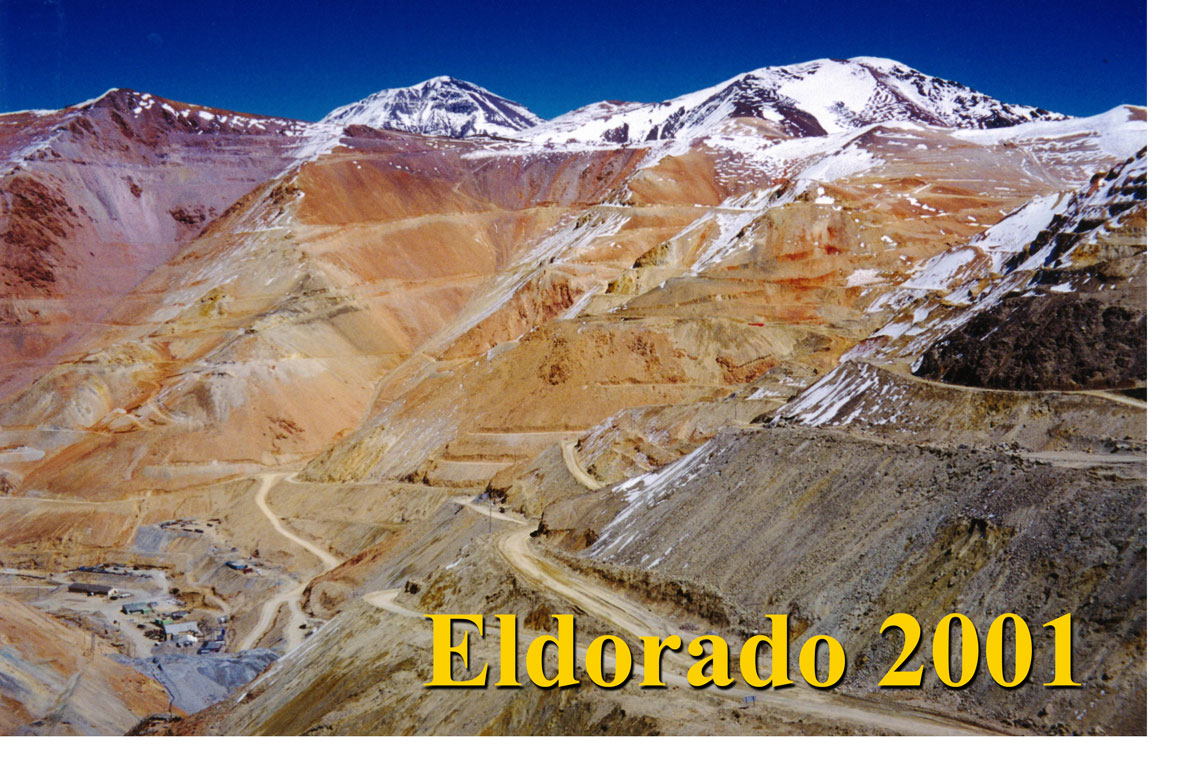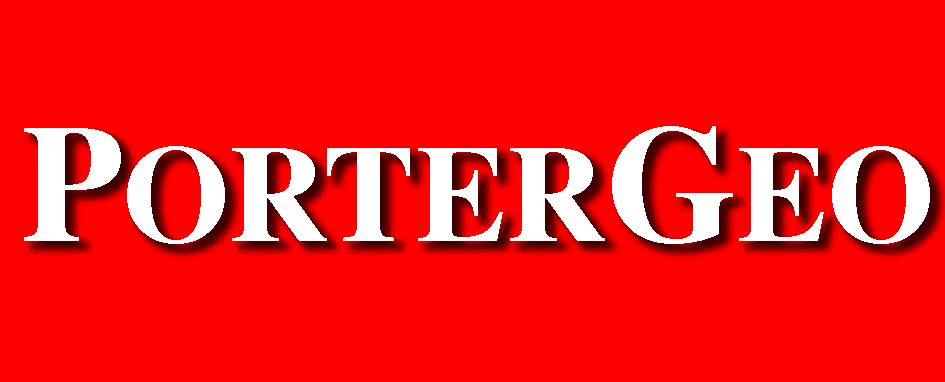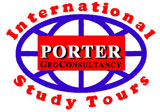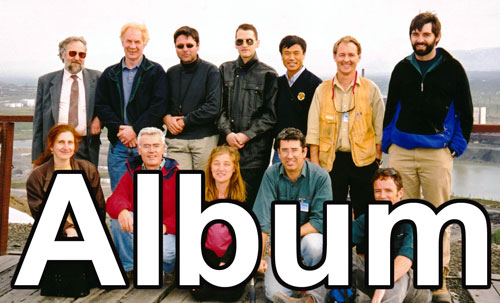The
Australian Mineral Foundation and
Porter GeoConsultancy, continued their International Study Tour series of professional development courses by visiting a representative selection of the major gold and iron-oxide copper-gold deposits of both the Andes of Peru and Chile, and the Archaean to Neoproterozoic Shield of South America in Brazil, supported by workshops/seminars led by recognised experts.

It afforded a unique opportunity study at first hand, and to compare and contrast the styles and occurrence of, the:

• Mesozoic to Cenozoic porphyry, and high and low sulphidation epithermal gold deposits of the central Andes in Peru and Chile;

• Mesozoic iron-oxide copper-gold/manto systems and related magnetite-apatite deposits of the Andean coastal belt in northern Chile;

• the giant deposits of the world's most prolific Archaean to Palaeoproterozoic iron-oxide copper-gold province, the Carajas district in the Amazonian Craton of Brazil;

• important Archaean orogenic greenstone and iron formation hosted, and Neoproterozoic sediment hosted gold deposits of the Atlantic Shield in Brazil.

 Photo Album - who went and what they saw,
Photo Album - who went and what they saw,
 The tour involved 2 modules, each of which were divided into 2 parts, as follows
The tour involved 2 modules, each of which were divided into 2 parts, as follows:

|
MODULE 1 - The Andes, Part A - Gold Deposits - 9 days, from Wednesday 3 to Saturday 13 October 2001
|

The tour and Module 1 commenced when the group assembled in Lima, Peru, for an introductory meeting and dinner on the evening of Tuesday 4 October. Over the next 9 days, they visited a series of gold mines distributed over a 2500 km interval, from as far north as Cajamarca in northern Peru, to La Serena in central Chile. The module ended in Antofagasta in northern Chile with a day long seminar on the 'Tectonics, Geology and Metallogeny of the Andes in Chile' that related to both Module 1A and 1B, and was the last and first day of the respective modules. The program included visits as follows:

 Yanacocha
Yanacocha, a cluster of high sulphidation Au-Cu epithermal deposits hosted by Miocene volcanic rocks in northern Peru;

 Pierina
Pierina, an oxidised, high sulphidation, Au-Ag epithermal deposit, hosted by Miocene volcanic rocks, ~275 km SSE of Yanacocha in northern Peru;

 Pascua-Lama
Pascua-Lama, a Miocene, high sulphidation, acid sulphate epithermal deposit, hosted by Upper Palaeozoic and Middle Tertiary rocks in central Chile;

 El Indio Belt
El Indio Belt, high sulphidation Au-Ag-Cu epithermal massive enargite-pyrite veins, and later quartz-gold veins - workshop and core in La Serena, Chile;

 La Coipa
La Coipa, a cluster of high sulphidation gold deposits of the Miocene Maricunga Belt of northern Chile, ~150 km north of Pascua Lama;

 Maricunga Field Workshop
Maricunga Field Workshop, regional traverse, including a visit to the
Marte porphyry gold deposit, ~65 km SE of La Coipa.

 El Peñón
El Peñón, Eocene low sulphidation epithermal gold, 250 km north of the Maricunga Belt & 45 km WSW of the Escondida porphyry Cu-Mo deposit;

 Antofagasta Seminar
Antofagasta Seminar, held at the Universidad Católica del Norte, where local experts gave an overview and context to both Module 1A and 1B; tour participants also gave presentations on deposits elsewhere in the world; attended by >100 geologists, including tour participants, representatives of the Chilean exploration and mining industry and students.

|
MODULE 1 - The Andes, Part B - IOCG Deposits - 7 days, from Saturday 13 to Saturday 20 October 2001
|

New Module 1B participants had joined the tour for the Antofagasta Seminar, while some who had taken module 1A left following its conclusion. The tour continued on, visiting a selection of the major deposits classified as Iron Oxide Copper-Gold and related Iron Oxide styles in the Chilean Coastal Cordillera, as well as a porphyry Cu-Au deposit in the same belt, for comparison. The module included:

 Mantos Blancos
Mantos Blancos, breccia, disseminated and stockwork sulphide mineralisation hosted by albitised and hematite altered Triassic felsic volcanic rocks.

 Mantoverde
Mantoverde, chalcopyrite-pyrite in fault controlled, specularite-dominated, tabular breccias and stockworks, hosted by Cretaceous andesites.

 Punta del Cobre District Field Workshop
Punta del Cobre District Field Workshop, classroom overview, field traverse of geology, regional & local alteration, and Cu & Fe mineralisation.

 La Candelaria
La Candelaria, disseminated and veined chalcopyrite, pyrite and gold in volcanic and hydrothermal breccias and replacing early massive magnetite.

 El Romeral
El Romeral, one of a number of large massive magnetite-actinolite bodies that define the Chilean Iron Belt of the Coastal Cordillera.

 Andacollo
Andacollo, Early Cretaceous porphyry Cu-Au, partially ringed by low sulphidation, manto gold ores, and up to several percent hematite and/or magnetite.

Following the Andacollo visit, some tour participants left, whilst the remainder flew on over the weekend, via Santiago, São Paulo and Brasilia to Marraba in Brazil where they rendezvoused with new joiners to commence Module 2A.

|
MODULE 2 - The Shield, Part A - IOCG Deposits - 7 days, Sunday 21 October to Sunday 8 November, 2001
|
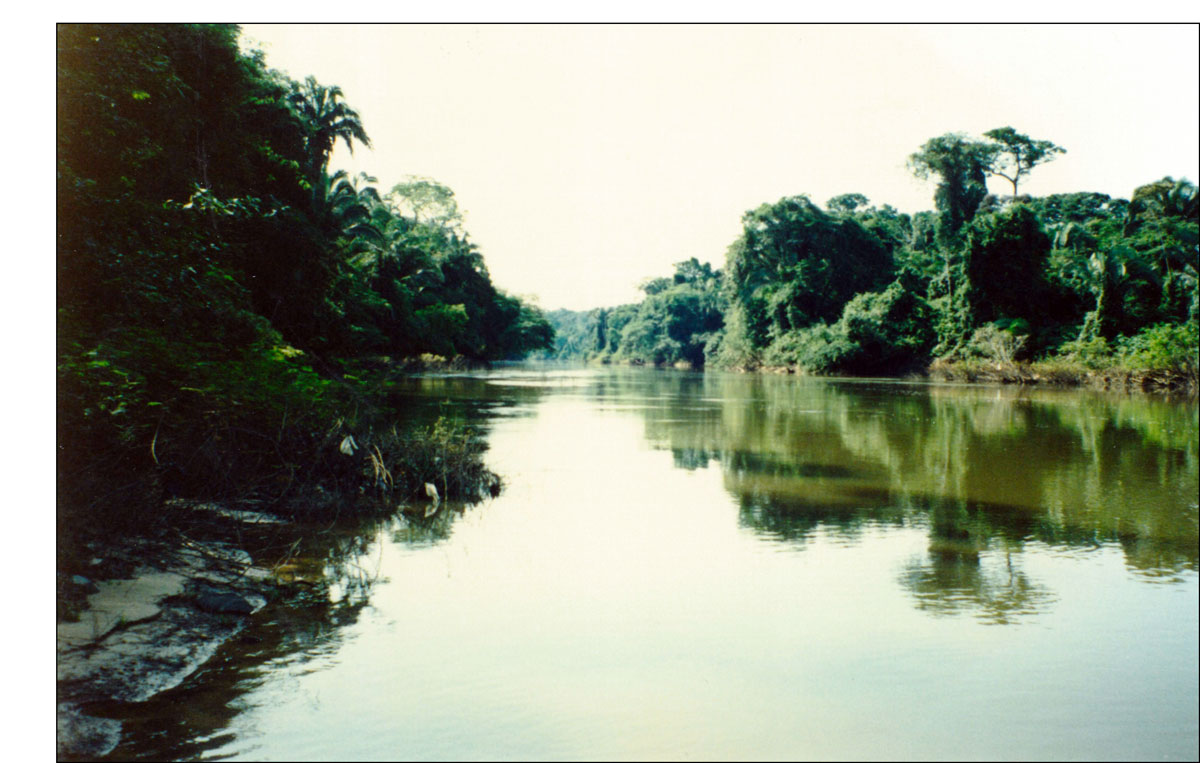

This module concentrated on Iron Oxide Copper-Gold deposits of the Carajás District in Brazil, and included:

 Cristalino
Cristalino, chalcopyrite-pyrite and magnetite mineralised stockwork and breccia within a shear zone cutting magnetite-amphibole altered Neoarchaean mafic volcanics.

 Sossego
Sossego, a deposit cluster in a broad zone of shearing, with two superposed Cu-Au mineralising events, an ~2.71 to 2.68 Ga magnetite-albite-actinolite, and an ~1.90 to 1.88 Ga potassic and chloritic altered phase.

 Igarapé Bahia
Igarapé Bahia, a gossan/lateritic Au, and supergene Cu-Au deposit developed over a semicircular annulus of hypogene Cu-Au mineralised hydrothermal breccia.

 Alemão
Alemão, a down-faulted segment of the Igarapé Bahia breccia that continues to depth with Cu sulphides, pyrite, magnetite, amphibole, chlorite, siderite and ankerite.

 Salobo
Salobo, a 4 km x up to 600 m wide, steeply dipping, composite of massive replacement lenses of magnetite, fayalite, grunerite, almandine, biotite and Cu sulphides following the mylonitic foliation of the enclosing Cinzento Shear Zone.

On the day following the Saloboo visit, the group was given a tour of the Carajás N4 iron ore operation, before flying to Brasilia in the afternoon, where some departed, and those remaining spent a relaxing weekend.

|
MODULE 2 - The Shield, Part B - Gold Deposits - 6 days, Sunday 28 October to Friday 2 November, 2001
|

This part of the tour was devoted to Archaean and Proterozoic gold deposit, and included visits to:

 Morro do Ouro
Morro do Ouro, hosted by an intensely deformed, quartz veined, concordant thrust zone, within a thick layer of Neoproterozoic, pyritic, graphitic, phyllite.

 Serra Grande mine at Crixas
Serra Grande mine at Crixas, a structurally controlled gold deposit in the Neoarchaean Crixas Greenstone Belt of the Goiás Massif.

 Quadrilátero Ferrífero Workshop
Quadrilátero Ferrífero Workshop, expert led classroom lectures and field traverses of the gold hosting Neoarchaean greenstones and iron formations;

 Morro Velho
Morro Velho, Neoarchaean, structurally controlled, ribbon-like deposit, hosted by plagioclase-quartz-carbonate rock with a 4.8 km down plunge length;

 São Bento
São Bento a Neoarchaean, structurally controlled iron formation replacement deposit within a komatiitic ultramafic and mafic succession.


This study tour was planned, organised and managed by Porter GeoConsultancy as a professional development course on the curriculum of the
Australian Mineral Foundation.
 Images
Images: Top left - El Indio underground mine, Chile, alteration and aridity at high altitude; Lower right - Crossing the Itacaiúnas River
en route to Salobo.

